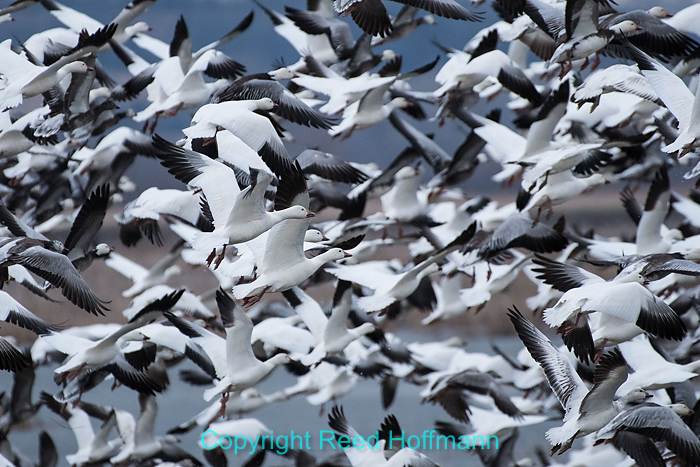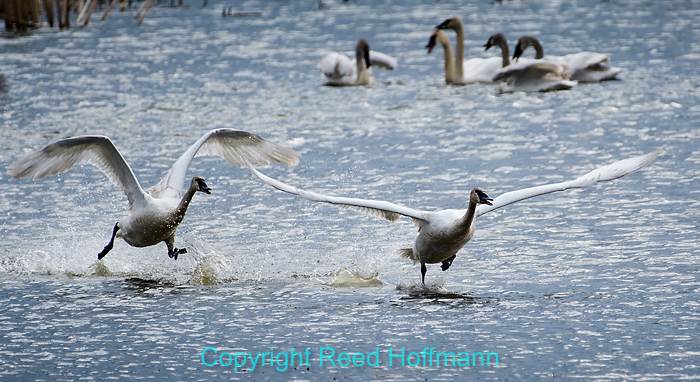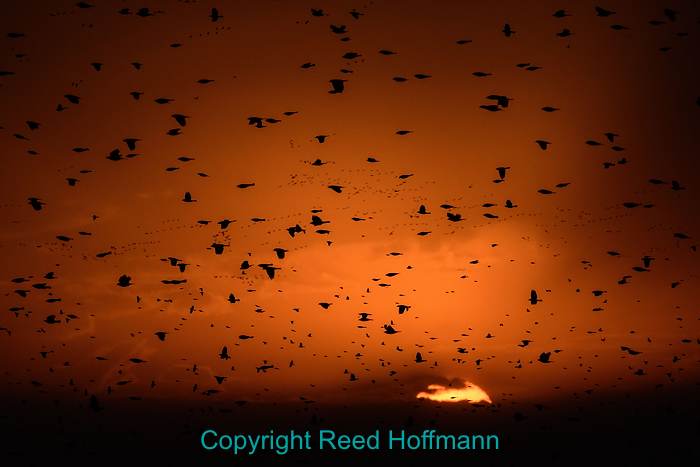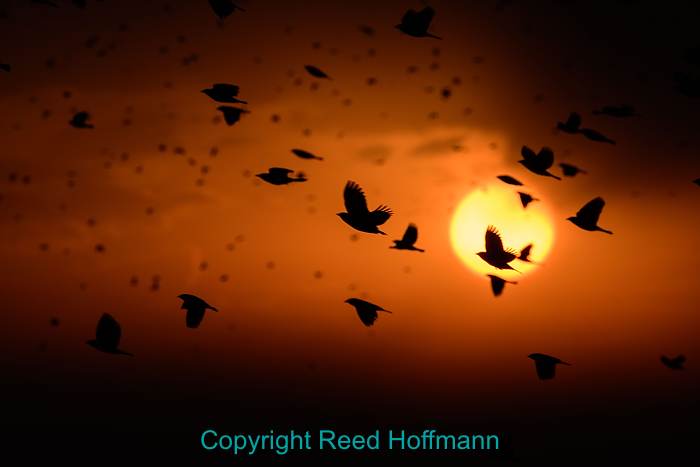One of my favorite words is “serendipity” – finding something you weren’t expecting. For me, serendipity is one of the great joys of photography. I go out expecting to photograph one thing, but instead find something different. And if I’m lucky, those surprises turn out to be better than what I’d hoped for. Last week was another great example of the joy of the unexpected.
My wife, an editor at The Kansas City Star, called last Thursday to tell me the snow geese were back at Loess Bluffs National Wildlife refuge. Every year around this time, they migrate north in numbers hard to imagine, as up to one million will pause here to take advantage of the nearby cornfields. Three weeks ago there were 25,000. Last week that number shot up to over 700,000. When that happens, the sky will darken as they lift off en masse, and the sound is deafening. Two hours after she called me, I was driving there with a friend.
After a rainy start, the day turned partly sunny and warm in Kansas City. Two hours north, though, at the refuge, it was still overcast, cold and windy. Worse yet, the early rain had chased most of the geese from the water to forage in the surrounding fields. There was only one group still in the refuge. On the plus side, they were relatively close to the road. But the wind was in our faces, which meant they were taking off and landing away from us. We were still able to make a few good photos, but overall, not what we were hoping for.

While we didn’t see snow geese in massive numbers on our visit, there were enough to at least make it look that way during a mass lift-off. Photo copyright Reed Hoffmann. Nikon DSLR, Aperture Priority, ISO 1800, 1/1600 at f/5.6, 0.0 EV, Nikkor 200-500mm f/5.6 lens at 500mm.
As we continued on the loop around the refuge, we came upon some trumpeter swans, part of the over 400 counted there last week. This group was close to the road, and better yet, with the wind behind us, they were taking off and landing towards us. You can sometimes make nice pictures of birds at rest, but the best photos are almost always of them in action. In addition to taking off and landing, there were a few chases going on. All of this made much better pictures than what we could get with the snow geese.

The trumpeter swans gave us our best action photos, like this chase. Fast frame rate, plus good autofocus, using AF-C and Group mode on my Nikon D500 helped me track and photograph the entire sequence. Photo copyright Reed Hoffmann. Nikon DSLR, Aperture Priority, ISO 560, 1/1600 at f/5.6, +0.3 EV, Nikkor 200-500mm f/5.6 lens at 5000mm.
We hadn’t given up on those geese yet, though, so made another visit to the other side of the refuge. But this time was same as the first, nothing special happening. However, while there, the clouds behind us started to break, which meant we might get a good sunset. For me, a pretty sky is just a pretty sky. If I think that’s going to happen, I want to find something to put against it. Which meant heading again to the other side of the lake, where we’d have an opportunity to put birds against that pretty sky. That’s when things got really interesting.
The last time we’d been there, for the snow geese, we witnessed something special. As it started getting dark, tens of thousands of birds started swarming (we think they were starlings, and this is called “murmuration”). Dark masses of them would sweep and twirl through the sky. It was hard to show as a photo, so both of us shot some video. This time, looking west across the water at the sunset, those masses appeared again. But in this case, they had a backdrop of orange sky and disk of sun. It was unique, and I knew there was a good picture to be had. But it was challenging, too. I needed to use a long enough telephoto lens to see the shape of the sun, but that also stacked birds in the frame from near to far. There was no way to keep them all in focus. Some would be sharp, some would be out of focus, and some would be blurred. So I shot several hundred frames, varying my focus occasionally. There was no chance of waiting for the “moment,” to shoot, so I just gunned away and hoped that out of all those frames, there would be a few that worked. Then the light was gone, and our day was over.

The best photos came at the very end of the day, as the sun burned through the clouds enough to show its shape and make the sky a deep orange. Photo copyright Reed Hoffmann. Nikon DSLR, Aperture Priority, ISO 1250, 1/4000 at f/11, -1.0 EV, Nikkor VR Zoom 200-500mm f/5.6 lens at 385mm.
Once again, serendipity played a big role in for me. I went to the refuge to photograph snow geese. Instead, I came away with a picture I wasn’t planning on, but really, really like. That orange sky, filled with birds and the last bit of sun slipping into the clouds, was something I hadn’t imagined. And it was my best photo of the day. That’s one big reason I keep taking pictures after all these years, even returning to the same places over and over. It’s the unpredictability, the chance for something totally unexpected to happen. To me, that’s what photography is all about – the joy of the unexpected.
(If you like this, please share it with your friends, and let them know about the links about photography I post on my business Facebook page. I’m also on Instagram and Twitter, @reedhoffmann)

